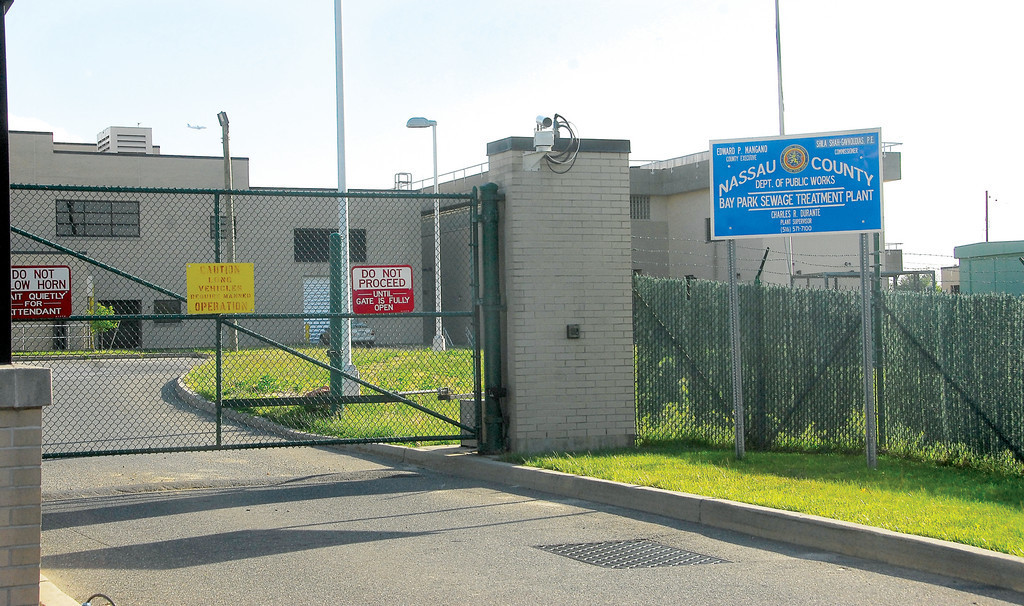Funding OK’d for Bay Park sewage plant
Legislature approves $463 million with no-interest loan
The Nassau County Legislature unanimously approved, on Monday, a no-interest, fully reimbursable $463 million loan from the State Environmental Facilities Corporation that will be used for repairs at the Bay Park Sewage Treatment Plant in East Rockaway. The Cedar Creek plant, on the Wantagh-Seaford border, will also see upgrades.
Under the plan, 90 percent of the repair expenses will be reimbursed by FEMA, and the remaining 10 percent will be reimbursed by Federal Community Development Block Grant funds provided to Nassau County by Governor Andrew Cuomo.
“My administration continues to aggressively move forward in repairing the Hurricane Sandy-damaged Bay Park Sewage Treatment Plant while strengthening the facility from future storms,” said Nassau County Executive Mangano. “This funding is a critical step in achieving the long-term health of the plant and protecting our local neighborhoods, waterways and environment.”
Mangano said that he will continue to pursue funding for an ocean outfall pipe.
The Democrats in the Legislature who, in July, approved only $262 million of the $722 million that Mangano requested to borrow to repair and make upgrades to both Bay Park and Cedar Creek plants, supported the terms of the EFC loan. They said at a press conference Monday that by waiting, the county saved about $12 million in loan costs by going through the EFC rather than bonding the way the county had first proposed.
Bay Park Sewage Plant, which was built in 1949 and treats 65 million gallons of sewage per day — 40 percent of the county’s waste — was out of service for two days after being hit with a 9-foot tidal surge during Superstorm Sandy. The plant, which sits just yards from the bay, was knocked out of service for 44 hours, and roughly 100 million gallons of untreated sewage overflowed into Long Island’s Hewlett Bay. Another 2.2 billion gallons of partially treated sewage flowed through the plant during the 44 days it took to fully restore operations, according to scientific researchers at Climate Central.org.

 45.0°,
Partly Cloudy
45.0°,
Partly Cloudy 







